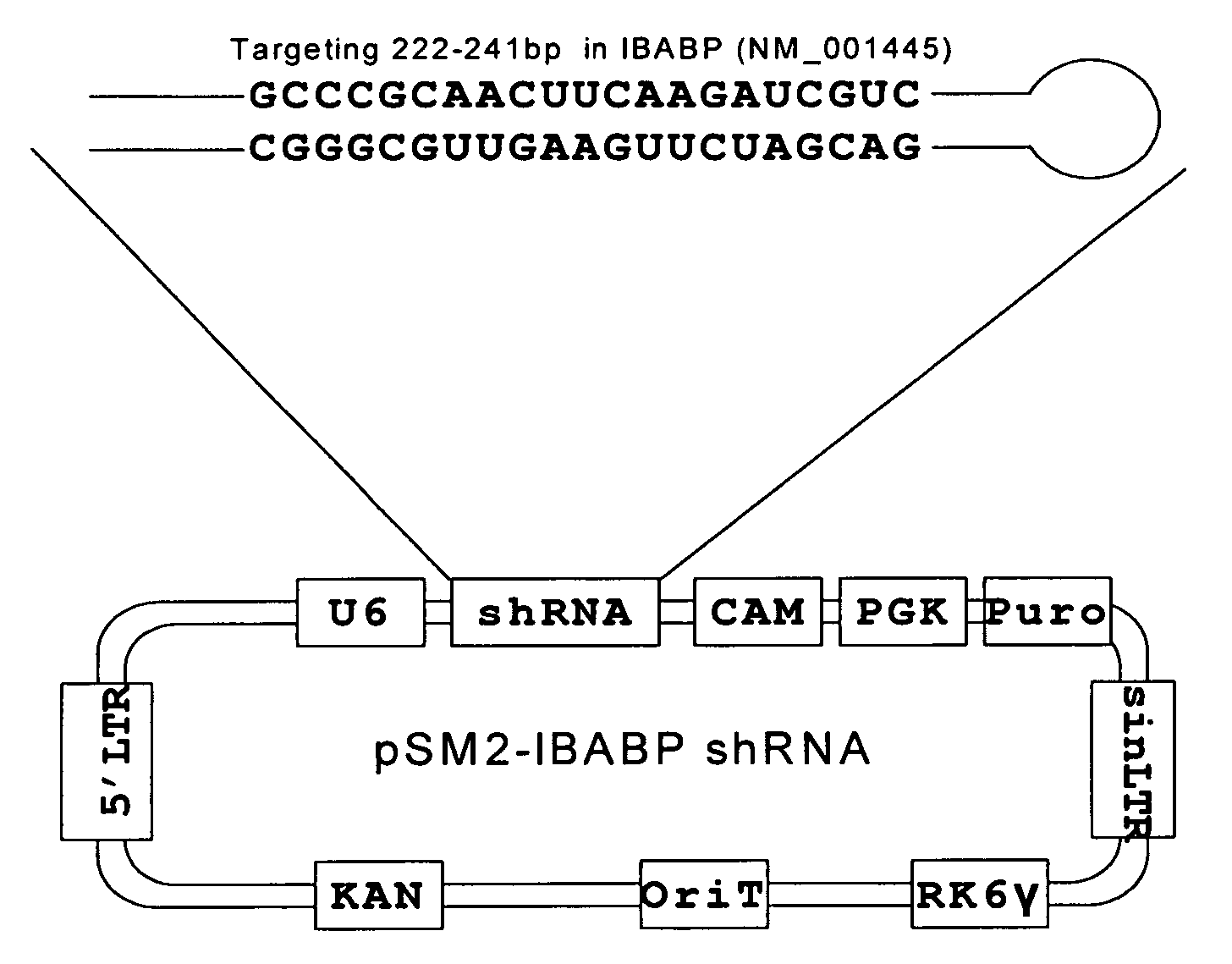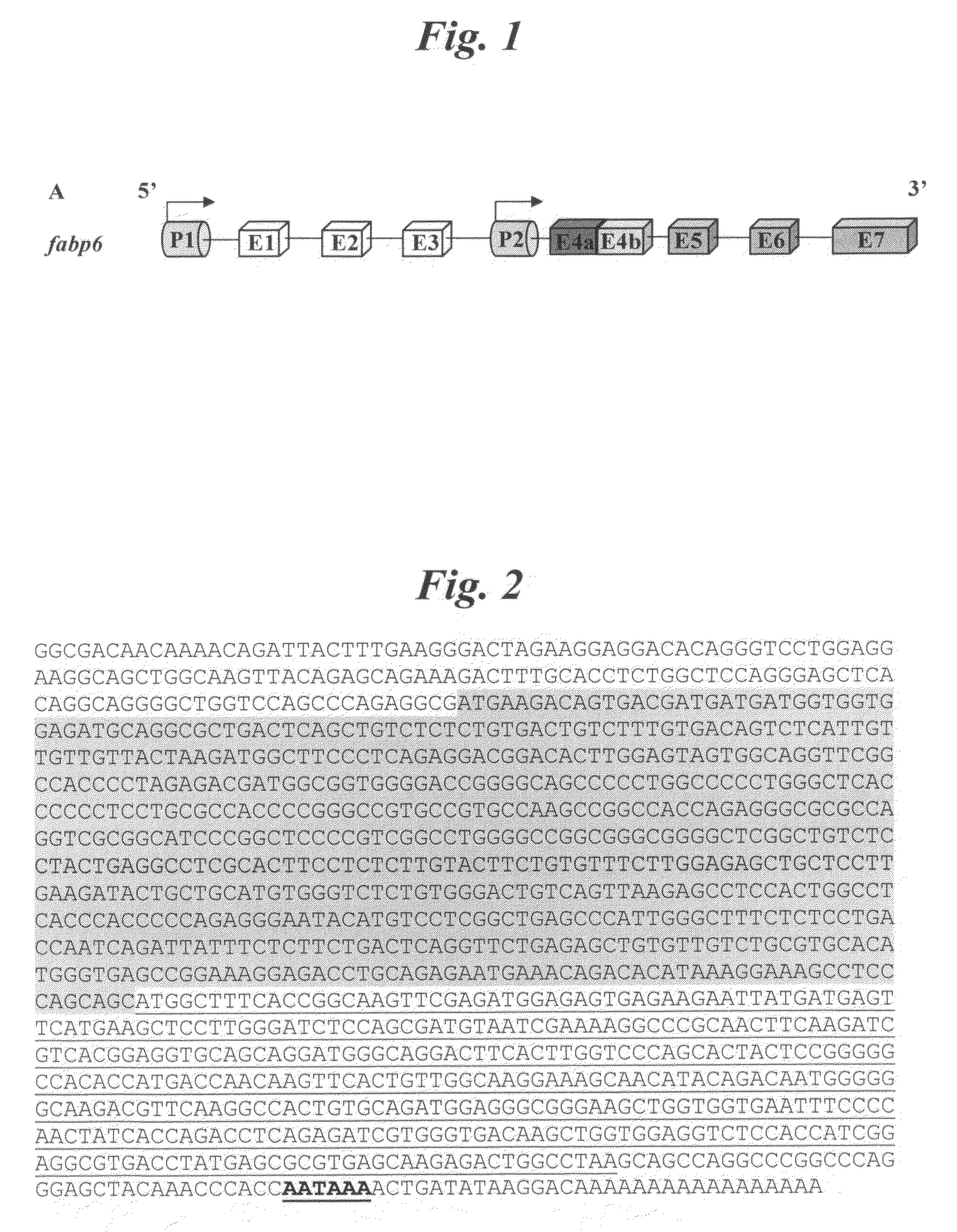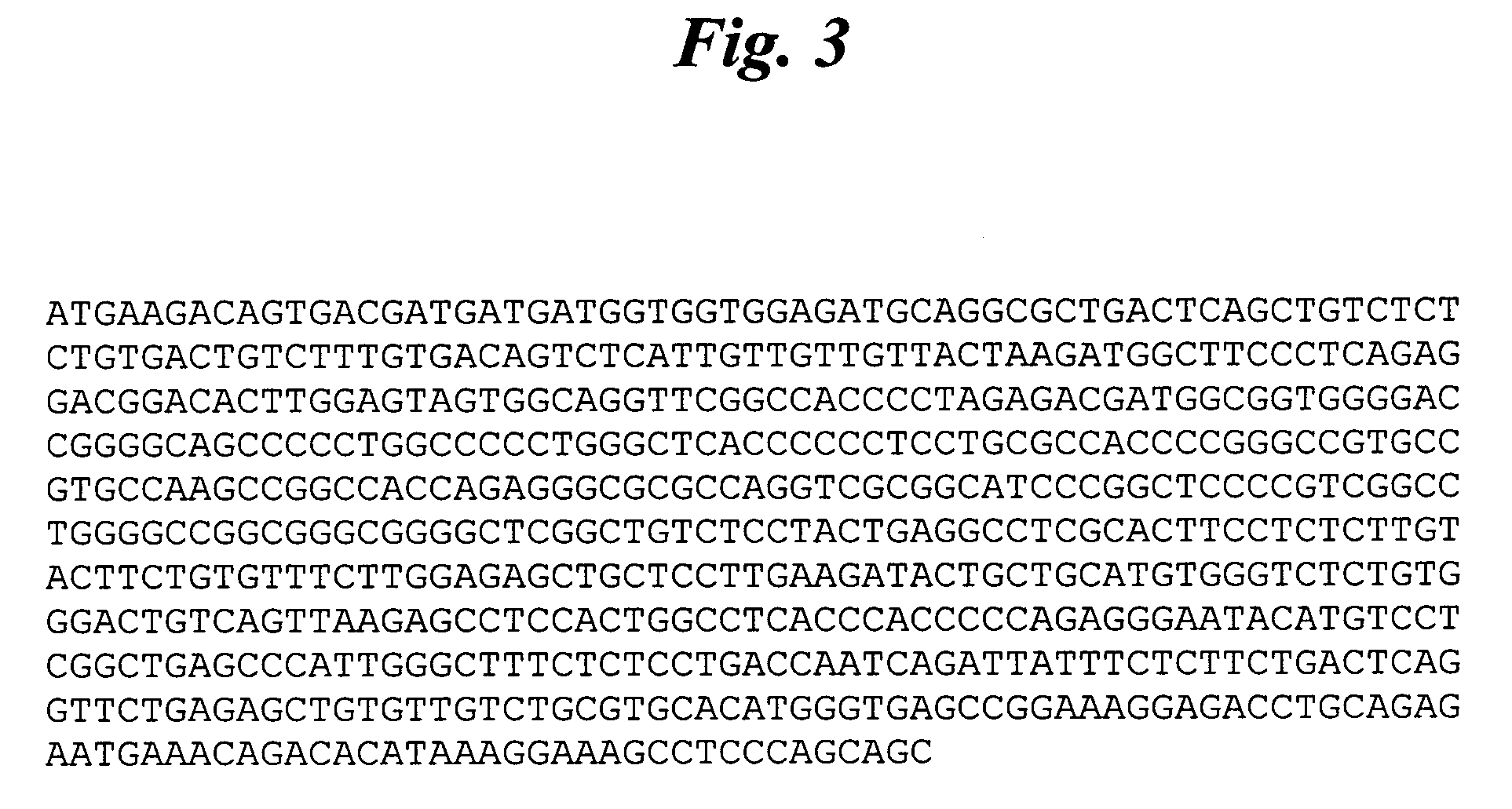Compositions and methods for treatment of colorectal cancer
a colorectal cancer and composition technology, applied in the field of colorectal cancer compositions and methods for treatment, can solve the problems of not detecting early malignancy, sensitivity of fobt remains around 50%, and high cost of invasive exams, so as to reduce colorectal cancer cell growth or survival
- Summary
- Abstract
- Description
- Claims
- Application Information
AI Technical Summary
Benefits of technology
Problems solved by technology
Method used
Image
Examples
example 1
IBABP-L as a Biomarker of Colorectal Cancer
[0242]We have discovered that IBABP is useful as a biomarker for colorectal cancer. Recent work indicated up-regulation in the expression of IBABP in colorectal tumors (DeGottardi et al., Dig. Dis. Sci. 49:982-989, 2004). However, our our in-depth analysis of the gene structure of IBABP surprisingly reveals a new variant of IBABP that we call IBABP-L. IBABP-L arises from an alternative start site in the IBABP gene and consequently encodes the 49-residue N-terminal sequence of IBABP-L. Most significantly, IBABP-L is up-regulated in all stages of colorectal cancer and in malignant colon polyps. We also show that the up-regulation of IBABP reported in a prior study (DeGottardi et al., Dig. Dis. Sci. 49:982-989, 2004) can be attributed entirely to up-regulation of IBABP-L; the expression of the shorter transcript encoding the 14 kDa IBABP is not significantly changed in colorectal cancer.
Materials and Methods
[0243]Cell lines and tissue samples....
example 2
Reducing Levels of IBABP-L as a Treatment for Colorectal Cancer
[0274]IBABP-L is involved in growth of colorectal cancer cells. We have demonstrated that IBABP-L is also involved in growth of colorectal cancer cells. FIG. 13 shows that a reduction in the expression of IBABP-L with shRNA inhibits the growth of HCT 116 cells. The growth of HCT 116 colorectal cancer cells was monitored over an eight-day period. Cells were seeded into the wells of a 96-well microtiter plate at a density of 7000 cells per well. Growth was monitored daily the Promega CellTiter kit. Each day twenty micro liters of this reagent was added to wells and incubated at 37° C. for 1.5 hr. The colorimetric reading of wells was recorded at 490 nm. Cell growth is plotted as a percentage of the absorbance of the initial seeding (7000 cells / well). To gauge the effects of knock-down of IBABP-L on growth, cells were transfected with the pSM2c retroviral vector encoding an shRNA targeting IBABP-L. Controls include cells th...
example 3
Use of the IBABP-L Promoter to Express Therapeutically Useful Genes in Colorectal Cancer Cells
[0282]The promoter region of IBABP-L as a DNA regulatory element that can be used to drive the expression of therapeutically useful genes in colon cancer cells. Since our prior patent showed the up-regulation of IBABP-L by 50-fold (on average) in human colon cancer tissue, we suggest that this promoter can be used to overexpress proteins delivered by gene therapy. Here is a results section that describes our “functional dissection” of this promoter. This results show that one of the key transcription factors involved in driving IBABP-L expression is NF-κB. We should certainly claim this as a minimal motif, BUT should not limit ourselves to this short sequence and should claim the entire promoter to −1568 (prior to start site) as this region is likely to contain additional regulatory sites.
[0283]Transcription of IBABP-L is controlled by NF-κB. As a first step toward understand the transcript...
PUM
| Property | Measurement | Unit |
|---|---|---|
| Composition | aaaaa | aaaaa |
| Acidity | aaaaa | aaaaa |
| Pharmaceutically acceptable | aaaaa | aaaaa |
Abstract
Description
Claims
Application Information
 Login to View More
Login to View More - R&D
- Intellectual Property
- Life Sciences
- Materials
- Tech Scout
- Unparalleled Data Quality
- Higher Quality Content
- 60% Fewer Hallucinations
Browse by: Latest US Patents, China's latest patents, Technical Efficacy Thesaurus, Application Domain, Technology Topic, Popular Technical Reports.
© 2025 PatSnap. All rights reserved.Legal|Privacy policy|Modern Slavery Act Transparency Statement|Sitemap|About US| Contact US: help@patsnap.com



